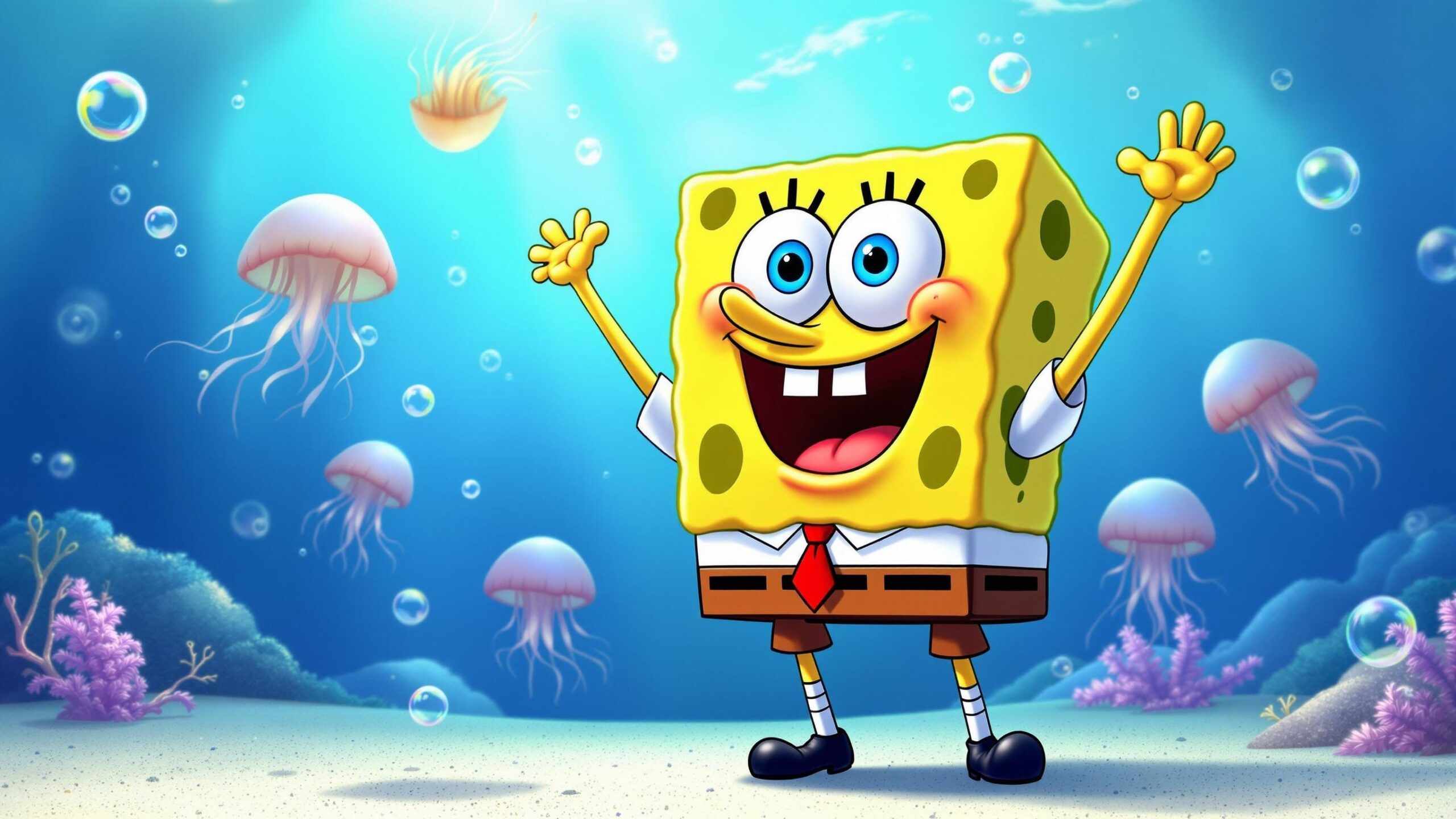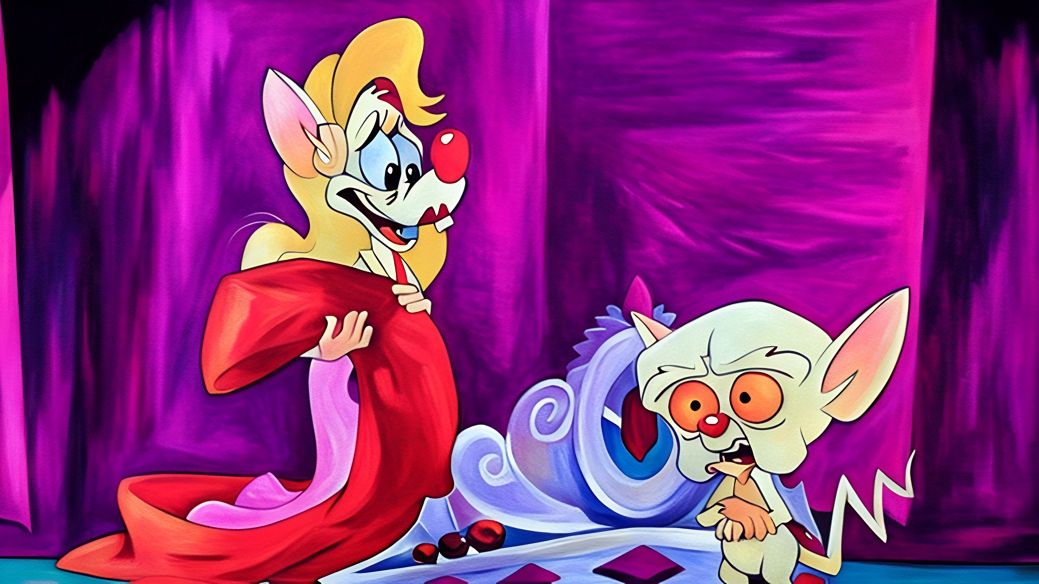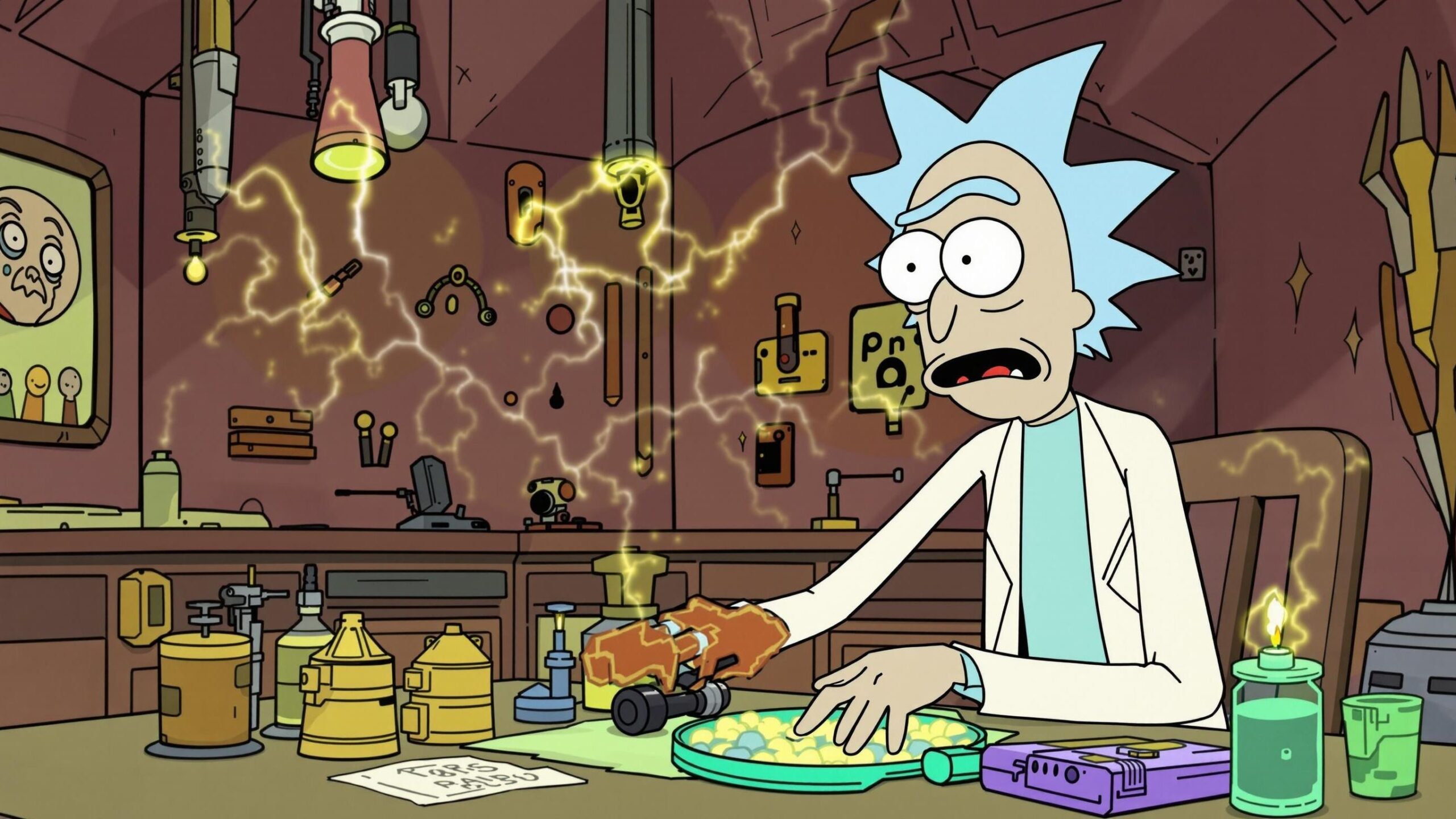Cartoon characters aren’t just voices in colorful bodies—they’re emotional touchstones, comedy legends, and cultural game-changers. From slapstick antics to soul-searching monologues, these icons have shaped generations. Whether they were making us laugh, think, or cry, these animated titans left their mark across the airwaves and across decades. This list highlights the top cartoon TV characters of all time—those who redefined the genre and left fans quoting, mimicking, and loving them long after the credits rolled.
#1: Bugs Bunny
Bugs Bunny isn’t just a cartoon character—he’s a cultural icon, an agent of chaos, and the face of Warner Bros. animation. First appearing in the 1940s, Bugs has outwitted everyone from Elmer Fudd to Daffy Duck and even entire armies, always with a sly smile and that unforgettable line, “Eh, what’s up, doc?” His nonchalant attitude, Brooklyn accent, and cross-dressing gags turned him into an early masterclass in subversion. Fun fact: Bugs has appeared in more films than any other cartoon character, including a stint in Space Jam alongside Michael Jordan. Voice legend Mel Blanc once claimed Bugs was the hardest voice to perfect—precisely because he was so cool under pressure. Audiences couldn’t get enough of his fourth-wall breaks and genre-hopping adventures, from Western spoofs to Shakespearean satire. What makes Bugs special isn’t just his comedy, but his intelligence—he wins because he’s the smartest in the room, even if that room is a desert with Yosemite Sam.

#2: Homer Simpson
If Bugs Bunny is the king of the golden age, Homer Simpson is the undisputed ruler of modern animation. Introduced in 1989 with The Simpsons, Homer represents the everyman: lazy, gluttonous, lovable, and oddly philosophical. Whether he’s working at the Springfield Nuclear Power Plant or inventing the Flaming Moe by accident, Homer has delivered some of TV’s funniest—and weirdest—moments. His iconic scream (“D’oh!”) is now in the Oxford English Dictionary. But beneath the slapstick lies real heart. Episodes like “Mother Simpson” and “And Maggie Makes Three” show his capacity for deep love, especially toward his family. He’s flawed in every way, yet his devotion to Marge and the kids redeems him time and again. Dan Castellaneta, Homer’s voice actor, has called him “a big kid with a beer belly,” and that’s why we relate to him so fiercely. For more than three decades, Homer has mirrored society’s ups and downs, often while wearing nothing but a muumuu or chasing donuts.

#3: SpongeBob SquarePants
A pineapple under the sea never seemed so exciting until SpongeBob arrived in 1999. Created by marine biologist Stephen Hillenburg, SpongeBob blends slapstick with a surreal innocence that few shows dare replicate. Whether he’s flipping Krabby Patties or jellyfishing with Patrick, SpongeBob’s optimism borders on the absurd. But that’s what made him a hit: he’s an eternal child with the work ethic of a CEO. He’s brought us unforgettable catchphrases like “I’m ready!” and “Is mayonnaise an instrument?” Behind his squeaky voice is Tom Kenny, who infuses the character with manic joy and emotional depth. The episode “Band Geeks” remains a fan-favorite, showcasing SpongeBob’s underdog victory with an explosive halftime performance that made real-life stadiums play the song “Sweet Victory.” The show has managed to remain culturally relevant for over two decades, not just as a cartoon, but as meme royalty. He’s both a symbol of absurd humor and a reminder that joy can be loud, yellow, and wear square pants.
#4: Scooby-Doo
No mystery here—Scooby-Doo remains one of television’s most enduring characters. Since 1969, this cowardly Great Dane has been munching Scooby Snacks and unmasking villains with the Mystery Inc. gang. He’s scared of his own shadow, yet always ends up helping solve the case. What’s unique about Scooby is how much personality the animators managed to pack into his semi-coherent speech. Voiced originally by Don Messick, Scooby’s “Ruh-roh!” became a pop culture staple. The chemistry between him and Shaggy, his eternally hungry human sidekick, is comedic gold—two slackers stumbling into heroism by accident. The show’s formula became so iconic that it birthed hundreds of imitations. But what fans love most is the character’s paradox: Scooby may be scared, but he’s also loyal, brave when it counts, and consistently funny. From cartoons to live-action films to countless reboots, Scooby remains a comforting presence in the ever-changing landscape of children’s entertainment.
#5: Tom and Jerry
Rarely do two characters say so little yet communicate so much. Tom the cat and Jerry the mouse have been locked in animated warfare since 1940, each episode a masterclass in visual storytelling and comedic timing. Created by William Hanna and Joseph Barbera, the duo created a formula so tight that dialogue was unnecessary—every gag landed with precision, every chase felt like a ballet of chaos. Tom may technically be the antagonist, but he’s oddly sympathetic, especially when Jerry gets the upper paw with cartoonish cruelty. Yet the two often show surprising moments of camaraderie, like when they protect each other from outside threats. The animation, especially in the 1940s–50s golden era, was revolutionary: expressive character movement, dynamic backgrounds, and synchronized sound effects that added punch to every pratfall. Tom and Jerry won multiple Academy Awards and laid the groundwork for slapstick in animation, influencing everything from Looney Tunes to Ren & Stimpy.
#6: Daffy Duck
Where Bugs Bunny was clever and calm, Daffy Duck was frantic, jealous, and gloriously self-absorbed. He wasn’t just comic relief—he was the chaos. Debuting in 1937, Daffy’s early appearances were pure mayhem. He’d zip around, quack nonsense, and push the limits of animation physics. Over time, writers reshaped him into the perfect foil for Bugs: insecure, loud, and forever one-upped. His catchphrase, “You’re despicable!”, delivered with that signature lisp, became as legendary as any quote in cartoons. Daffy wasn’t always likable—but that’s what made him brilliant. He was the embodiment of ego unchecked, the cartoon version of tragicomedy. Chuck Jones once described Daffy as a character who could never be happy because someone else might be happier. Yet he’s also been a hero, villain, cowboy, wizard, and space explorer (remember Duck Dodgers?). In the vast pantheon of animated characters, Daffy is one of the few who thrives in contradiction.
#7: Stewie Griffin
A baby with matricidal ambitions, a British accent, and a knack for world domination—Stewie Griffin shattered the mold for cartoon toddlers. Introduced in Family Guy in 1999, Stewie began as an evil genius but evolved into a surprisingly vulnerable, complex character. His dynamic with Brian the dog often veers into philosophical territory, showcasing themes of loneliness, identity, and even suppressed sexuality. While older episodes focused on his evil plans (like building a time machine or killing Lois), later seasons revealed more layers—like his insecurities and his desire to connect. His voice, inspired by actor Rex Harrison, became an instant classic, with quotes like “Victory is mine!” cementing his status. Seth MacFarlane, who voices Stewie, uses him as a lens for satire, often lampooning everything from politics to pop culture. Beneath the head shaped like a football is a character who, somehow, balances high-concept science fiction plots with dirty jokes and genuine emotional arcs.
#8: Rick Sanchez
Science fiction has never seen a character quite like Rick Sanchez. As the genius, alcoholic, and wildly nihilistic grandfather from Rick and Morty, Rick exploded onto screens in 2013 and instantly captivated fans. He’s capable of building interdimensional portals, defeating entire armies, and dismantling cosmic entities—all while burping mid-sentence. But what makes Rick fascinating isn’t just his intelligence, it’s his emotional contradictions. He often pushes people away with cruelty and apathy, yet subtly shows care for Morty and his family. Quotes like “Wubba lubba dub-dub!” became memes, but deeper lines like “Nobody exists on purpose… we’re all going to die… come watch TV” left viewers questioning everything. Rick’s voice and mannerisms, delivered by co-creator Justin Roiland, blend comedy with existential dread. He’s the antihero for a disillusioned generation, representing both the highs of intellectual escapism and the lows of detached narcissism. Love him or hate him, Rick is impossible to ignore.
#9: Batman (Bruce Wayne – Batman: The Animated Series)
Kevin Conroy’s voice as Batman is burned into the brains of 90s kids everywhere. Batman: The Animated Series didn’t just elevate superhero cartoons—it revolutionized them. This version of Bruce Wayne was moody, complex, and poetic, with a noir tone that made Gotham feel like a living character. What stood out was Batman’s humanity. He wasn’t just a rich guy with gadgets—he was a wounded soul trying to keep others from suffering what he did. From confronting Mr. Freeze’s tragic origins to comforting a dying crook in “Appointment in Crime Alley,” this Batman was emotional, intellectual, and deeply moral. The show’s use of dramatic lighting, orchestral music, and sophisticated writing earned it Emmys and a legacy that still influences Batman media today. Fun fact: the episode “Heart of Ice” redefined Mr. Freeze so well, the comics rewrote his origin to match. This Batman didn’t just fight crime—he made us care about justice.
#10: Pikachu
While not the most talkative character on this list, Pikachu’s emotional range transcends language. As Ash’s loyal partner in the Pokémon animated series, Pikachu became the franchise’s mascot—and the face of an entire generation of animation. His electric powers may be iconic, but it’s his expressions, squeaks, and moments of bravery that hit hardest. Episodes like “Pikachu’s Goodbye” proved that even a single word (“Pika”) can convey heartbreak, loyalty, and love. Pikachu’s refusal to evolve into Raichu in Season 1 also symbolized staying true to oneself. Voiced by Ikue Ōtani, the little yellow mouse has appeared in almost every episode since 1997, spawning toys, memes, and even a Detective Pikachu movie. Despite hundreds of other Pokémon, none have matched Pikachu’s universal appeal. Whether he’s saving Ash or zapping Team Rocket into the sky, Pikachu represents friendship, adventure, and that spark of excitement we all felt when we first heard “Gotta catch ‘em all!”
These animated legends prove that cartoons aren’t just kid stuff—they’re mirrors of our hopes, fears, and wildest imaginations. From the slapstick brilliance of Bugs Bunny to the existential chaos of Rick Sanchez, each character on this list has carved out a legacy that spans generations. Whether you grew up watching them or discovered them later, these cartoon icons remind us that animation is one of the richest storytelling mediums out there—sometimes louder, sometimes weirder, but always unforgettable.




